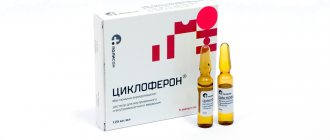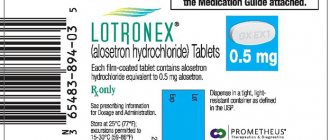CamROU, 1 piece, 2 ml, 750 IU/ml, solution for intramuscular administration
The drug CamROU is administered intramuscularly. Cannot be administered intravenously.
Before administration, ampoules with the drug are kept for 2 hours at room temperature (from 18° to 22°C). To avoid foam formation, the drug is drawn into a syringe with a wide bore needle. The drug cannot be stored in an opened bottle.
The drug is administered only intramuscularly, once: to a postpartum woman - during the first 48-72 hours after birth, in case of artificial termination of pregnancy - immediately after the end of the operation.
One dose - 300 mcg at a titer of 1:2000 or 600 mcg at a titer of 1:1000.
Human anti-rhesus immunoglobulin Rh0(D) is administered in one dose of 300 mcg (1500 IU), sometimes two doses of 600 mcg (3000 IU) intramuscularly once: to a postpartum woman - within 72 hours after birth; in case of termination of pregnancy - immediately after the end of the operation.
The following criteria must be met:
1. The mother must be Rh negative and must not already be sensitized to the Rh0(D) factor.
2. Her child must be Rh positive.
If the drug is given before delivery, it is essential that the mother receives another dose of the drug after the birth of her Rh-positive baby within 72 hours of delivery. If it is determined that the father is Rh negative, there is no need to administer the drug.
Pregnancy and other conditions associated with pregnancy and childbirth
- For prophylaxis during the postpartum period, one dose of 300 mcg (1500 IU) of CamROU should be administered, preferably within 72 hours after birth. The need for a certain dose in the case of a full term pregnancy varies depending on the volume of fetal blood entering the mother's bloodstream. One dose of 300 mcg (1500 IU) contains a sufficient amount of antibodies to prevent sensitization to the Rh factor, if the volume of fetal red blood cells entering the mother's bloodstream does not exceed 15 ml. In cases where a larger volume of fetal red blood cells (more than 30 ml of whole blood or more than 15 ml of red blood cells) is expected to enter the maternal circulation, a fetal red blood cell count should be performed using an approved laboratory technique (for example, a modified acid washout-stain method according to Kleihauer and Betke ) to establish the required dose of immunoglobulin. The calculated volume of fetal red blood cells entering the mother's bloodstream is divided by 15 ml and the number of doses of CamROU that must be administered is obtained. If the calculated dose results in a fraction, then the number of doses should be rounded up to the next whole number (for example, if a result of 1.4 is obtained, 2 doses of the drug should be administered - 600 mcg (3000 IU)).
- For prophylaxis in the prenatal period, at approximately the 28th week of pregnancy, one dose of the drug 300 mcg (1500 IU) is administered. This must be followed by another dose of 300 mcg (1500 IU), preferably within 48-72 hours after birth, if the newborn baby is Rh positive.
- If pregnancy continues after the threat of abortion arises, at any stage of pregnancy, it is recommended to administer one dose of the drug 300 mcg (1500 IU). If it is suspected that more than 15 ml of fetal red blood cells have entered the maternal bloodstream, the dose must be adjusted as described in point 1.
- After spontaneous abortion, induced abortion or termination of an ectopic pregnancy during pregnancy more than 13 weeks, it is recommended to administer one dose of the drug 300 mcg (1500 IU). If it is suspected that more than 15 ml of fetal red blood cells have entered the maternal circulation, the dose must be adjusted as described in point 1. If the pregnancy is terminated at less than 13 weeks, a single mini-dose of CamROU (approximately 50 mcg (250 IU)) may be used.
- After amniocentesis, either at 15-18 weeks of pregnancy, or during the third trimester of pregnancy, or in case of injury to the abdominal organs during the second and/or third trimester, it is recommended to administer one dose of the drug 300 mcg (1500 IU). If it is suspected that more than 15 ml of red blood cells have entered the mother's bloodstream, the dose must be changed as described in point 1. If abdominal trauma, amniocentesis or other adverse circumstance requires administration of the drug at 13-18 weeks of pregnancy, another dose of the drug should be administered 300 mcg (1500 IU) at 26-28 weeks. To maintain protection throughout pregnancy, the concentration of passively obtained antibodies to Rh0(D) should not fall below the level necessary to prevent an immune response to Rh-positive fetal red blood cells. T1/2 of human anti-rhesus immunoglobulin Rh0(D) is 28-35 days. In any case, the dose of the drug should be administered within 48-72 hours after birth - if the child is Rh positive. If delivery occurs within 3 weeks of the last dose, the postpartum dose can be discontinued (unless more than 15 ml of fetal red blood cells have entered the maternal circulation).
Kamrho
The drug is administered intramuscularly. Cannot be administered intravenously.
Before administration, ampoules with the drug are kept for 2 hours at room temperature (from 18° to 22°C). To avoid foam formation, the drug is drawn into a syringe with a wide bore needle. The drug cannot be stored in an opened bottle.
The drug is administered only intramuscularly, once: to a postpartum woman
- during the first 48-72 hours after birth, in case of
artificial termination of pregnancy
- immediately after the end of the operation.
One dose - 300 mcg at a titer of 1:2000 or 600 mcg at a titer of 1:1000.
Human anti-rhesus immunoglobulin Rh0(D) is administered in one dose of 300 mcg (1500 IU), sometimes two doses of 600 mcg (3000 IU) intramuscularly once: to a postpartum woman
- within 72 hours after birth;
in case of termination of pregnancy
- immediately after the end of the operation.
The following criteria must be met:
1. The mother must be Rh negative and must not already be sensitized to the Rh0(D) factor.
2. Her child must be Rh positive.
If the drug is administered before delivery, it is essential that the mother receives another dose of the drug after the birth of the Rh-positive baby within 72 hours of delivery. If it is determined that the father is Rh negative, there is no need to administer the drug.
Pregnancy and other conditions associated with pregnancy and childbirth
1. For prophylaxis in the postpartum period, one dose of 300 mcg (1500 IU) of CamROU should be administered, preferably within 72 hours after birth. The need for a certain dose in the case of a full term pregnancy varies depending on the volume of fetal blood entering the mother's bloodstream. One dose of 300 mcg (1500 IU) contains a sufficient amount of antibodies to prevent sensitization to the Rh factor, if the volume of fetal red blood cells entering the mother's bloodstream does not exceed 15 ml. In cases where a larger volume of fetal red blood cells (more than 30 ml of whole blood or more than 15 ml of red blood cells) is expected to enter the maternal circulation, a fetal red blood cell count should be performed using an approved laboratory technique (for example, a modified acid washout-stain method according to Kleihauer and Betke ) to establish the required dose of immunoglobulin. The calculated volume of fetal red blood cells entering the mother's bloodstream is divided by 15 ml and the number of doses of CamROU that must be administered is obtained. If the calculated dose results in a fraction, then the number of doses should be rounded up to the next whole number (for example, if a result of 1.4 is obtained, 2 doses of the drug should be administered - 600 mcg (3000 IU)).
2. For prophylaxis in the prenatal period, at approximately the 28th week of pregnancy, one dose of the drug 300 mcg (1500 IU) is administered. This must be followed by another dose of 300 mcg (1500 IU), preferably within 48-72 hours after birth, if the newborn baby is Rh positive.
3. If pregnancy continues after the threat of abortion arises, at any stage of pregnancy it is recommended to administer one dose of the drug 300 mcg (1500 IU). If it is suspected that more than 15 ml of fetal red blood cells have entered the maternal bloodstream, the dose must be adjusted as described in point 1.
4. After spontaneous abortion, induced abortion or termination of ectopic pregnancy during pregnancy more than 13 weeks, it is recommended to administer one dose of the drug 300 mcg (1500 IU). If it is suspected that more than 15 ml of fetal red blood cells have entered the maternal circulation, the dose must be adjusted as described in point 1. If the pregnancy is terminated at less than 13 weeks, a single mini-dose of CamROU (approximately 50 mcg (250 IU)) may be used.
5. After amniocentesis, either at 15-18 weeks of pregnancy, or during the third trimester of pregnancy, or in case of injury to the abdominal organs during the second and/or third trimester, it is recommended to administer one dose of the drug 300 mcg (1500 IU). If it is suspected that more than 15 ml of red blood cells have entered the mother's bloodstream, the dose must be changed as described in point 1. If abdominal trauma, amniocentesis or other adverse circumstance requires administration of the drug at 13-18 weeks of pregnancy, another dose of the drug should be administered 300 mcg (1500 IU) at 26-28 weeks. To maintain protection throughout pregnancy, the concentration of passively obtained antibodies to Rh0(D) should not fall below the level necessary to prevent an immune response to Rh-positive fetal red blood cells. T1/2 of human anti-rhesus immunoglobulin Rh0(D) is 28-35 days. In any case, the dose of the drug should be administered within 48-72 hours after birth - if the child is Rh positive. If delivery occurs within 3 weeks of the last dose, the postpartum dose can be discontinued (unless more than 15 ml of fetal red blood cells have entered the maternal circulation).
Directions for use and dosage:
The drug is administered intramuscularly. Cannot be administered intravenously.
Before administration, ampoules with the drug are kept for 2 hours at room temperature (from 18° to 22°C). To avoid foam formation, the drug is drawn into a syringe with a wide bore needle. The drug cannot be stored in an opened bottle.
The drug is administered only intramuscularly, once: to a postpartum woman - during the first 48-72 hours after birth, in case of artificial termination of pregnancy - immediately after the end of the operation.
One dose - 300 mcg at a titer of 1:2000 or 600 mcg at a titer of 1:1000.
Human anti-rhesus immunoglobulin Rh0(D) is administered in one dose of 300 mcg (1500 IU), sometimes two doses of 600 mcg (3000 IU) intramuscularly once: to a postpartum woman - within 72 hours after birth; in case of termination of pregnancy - immediately after the end of the operation.
The following criteria must be met:
1. The mother must be Rh negative and must not already be sensitized to the Rh0(D) factor.
2. Her child must be Rh positive.
If the drug is administered before delivery, it is essential that the mother receives another dose of the drug after the birth of the Rh-positive baby within 72 hours of delivery. If it is determined that the father is Rh negative, there is no need to administer the drug.
pharmachologic effect
Human anti-rhesus immunoglobulin Rh0(D). It is an immunologically active protein fraction isolated from human plasma or serum of donors tested for the absence of antibodies to the human immunodeficiency virus (HIV), hepatitis C virus (anti-HCV) and hepatitis B surface antigen (HBsAg). The active component of the drug is immunoglobulin G, which contains incomplete anti-Rh0(D) antibodies.
Used to prevent isoimmunization of an Rh-negative mother exposed to Rh-positive fetal blood during the birth of an Rh-positive child, during an abortion (both spontaneous and induced), in the event of amniocentesis, or in the event of injury to the abdominal organs during pregnancy. Reduces the frequency of Rh isoimmunization of the mother when the drug is administered within 72 hours after the birth of a full-term Rh-positive child by a Rh-negative mother.
special instructions
In children born to women who received human immunoglobulin anti-Rhesus Rh0(D) before birth, weakly positive results of direct tests for the presence of antiglobulin may be obtained at birth. Passively obtained antibodies to Rh0(D) may be detected in the mother's blood serum if Antibody screening tests are performed after antenatal or postnatal administration of human immunoglobulin to Rh0(D). If it is determined that the father is Rh0(D) negative, there is no need to administer the drug. After administration of the drug, patients should be observed for 30 minutes. Medical offices must have anti-shock therapy. Drugs in vials and syringes with damaged integrity or labeling, changes in physical properties (color change, cloudiness of the solution, presence of unbreakable flakes), expired, or improper storage are not suitable for use.
Release form, packaging and composition of the drug KamROU
Solution for intramuscular administration
transparent or opalescent, colorless or light yellow; may contain small amounts of suspended protein particles.
| 1 ml | 1 fl. | |
| human immunoglobulin anti-rhesus Rh0(D) | 750 IU (150 mcg) | 1500 IU (300 mcg) |
Excipients
: glycine, water d/i.
2 ml - glass bottles (1) complete with a needle with a filter - cardboard packs.
Indications for use
Prevention of Rh conflict in Rh-negative women who are not sensitized to the Rh0(D) antigen (i.e. in the absence of Rh antibodies) provided:
- first pregnancy and birth of an Rh-positive child;
- with artificial or spontaneous abortion;
- in case of termination of an ectopic pregnancy;
- in case of threat of miscarriage;
- when performing amniocentesis and other procedures associated with the risk of fetal blood entering the mother’s bloodstream;
- Rh-positive blood of the husband;
- in case of abdominal trauma.
Treatment of Rh-negative patients in case of transfusion of Rh-positive blood or preparations containing red blood cells.


